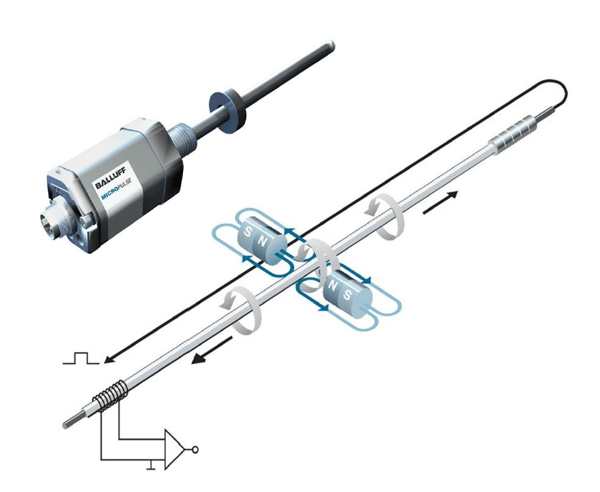Magnetostriction
A magnetic field has the effect of locally deforming the wave guide. This effect is called magnetostriction.

Magnetostriction (lat. Strictio: contraction) is understood to mean all changes in the geometric dimensions of bodies, especially ferro-, antiferro- and ferrimagnets, resulting from magnetization processes. The phenomena can be divided into volume-invariant changes of shape and form-variable volume changes. If the sample is shortened in the direction of magnetization, then one speaks of negative, otherwise of positive magnetostriction.
In practice, the shape defines magnetostriction, which is two orders of magnitude more pronounced than volume magnetostriction.
The following figure shows the positive design magnetostriction of a cube caused by the application of a magnetic field of the field strength H. There is a longitudinal increase in the direction of the magnetization M. The body expansion decreases transversely to the magnetization.
The body is stretched in the direction of the magnetic field lines. The magnetostrictive effect on various metals such as iron, cobalt, nickel and their alloys is particularly pronounced, the magnitude and direction of the effect strongly depending on the composition of the alloy.
